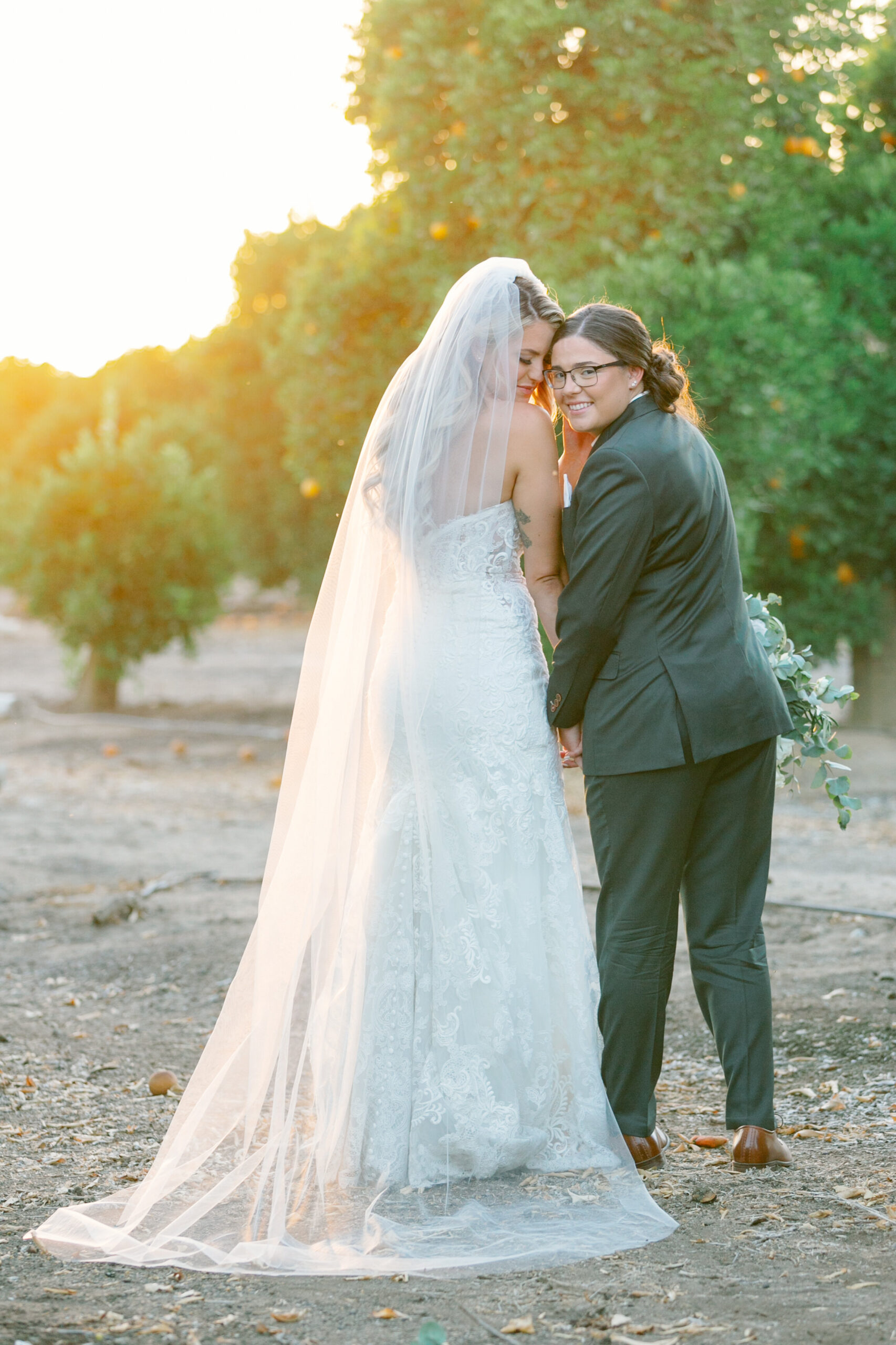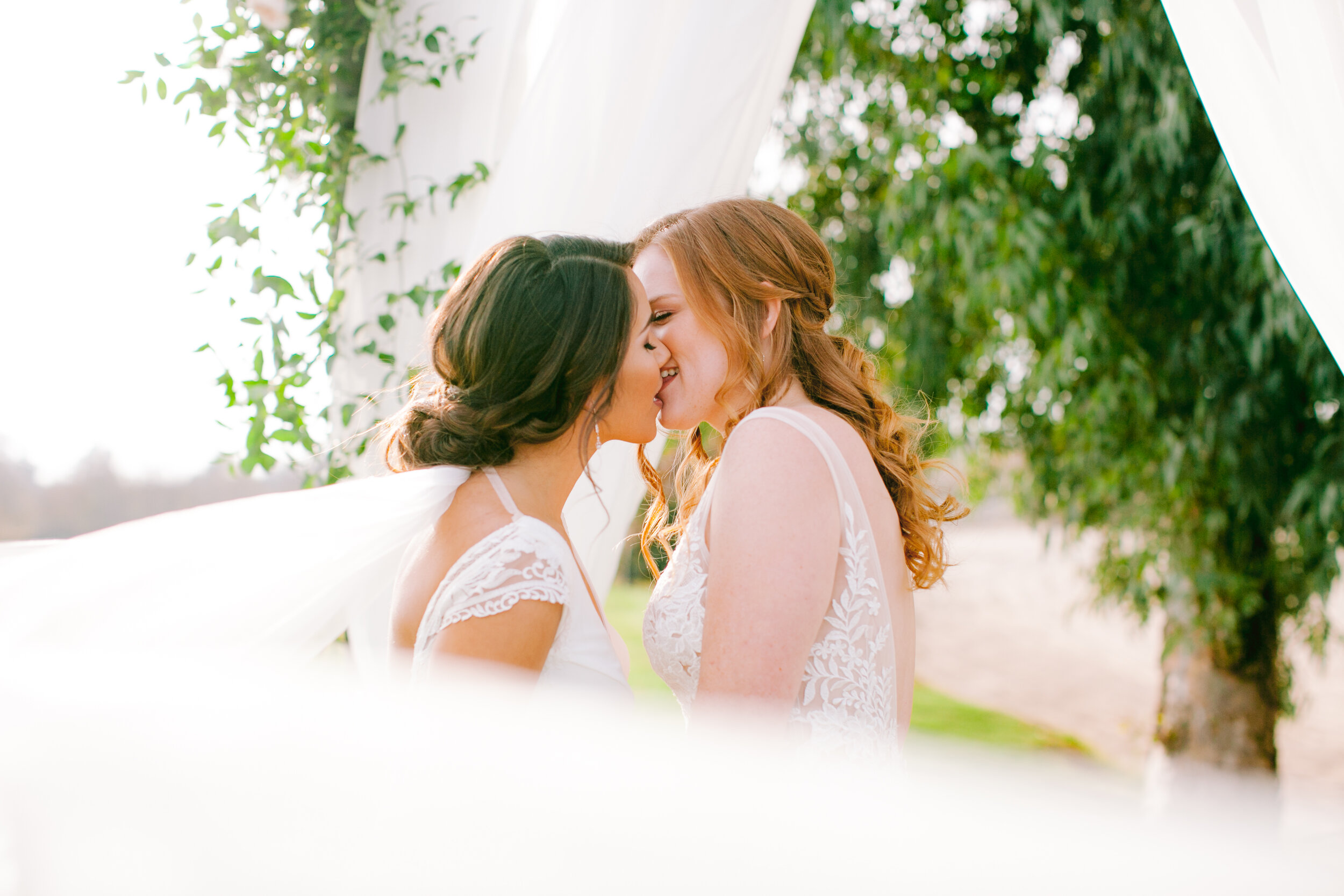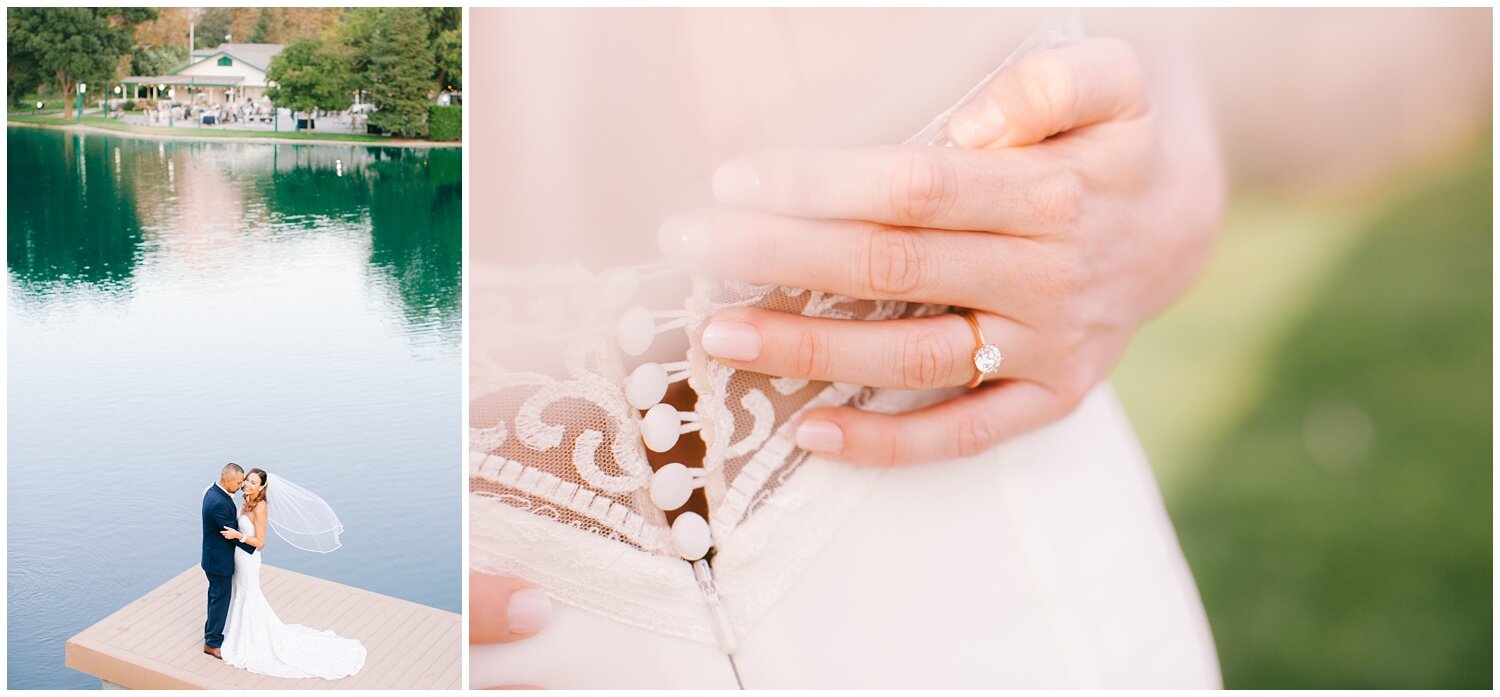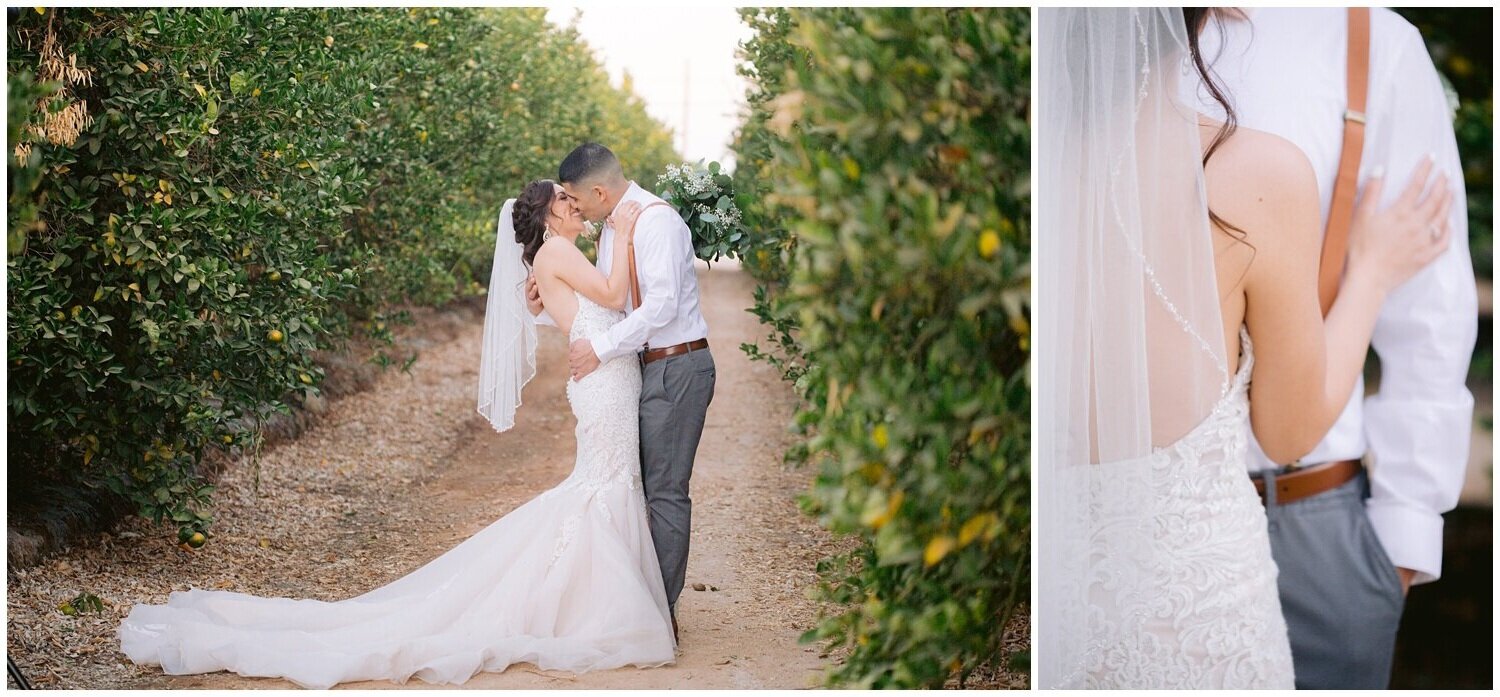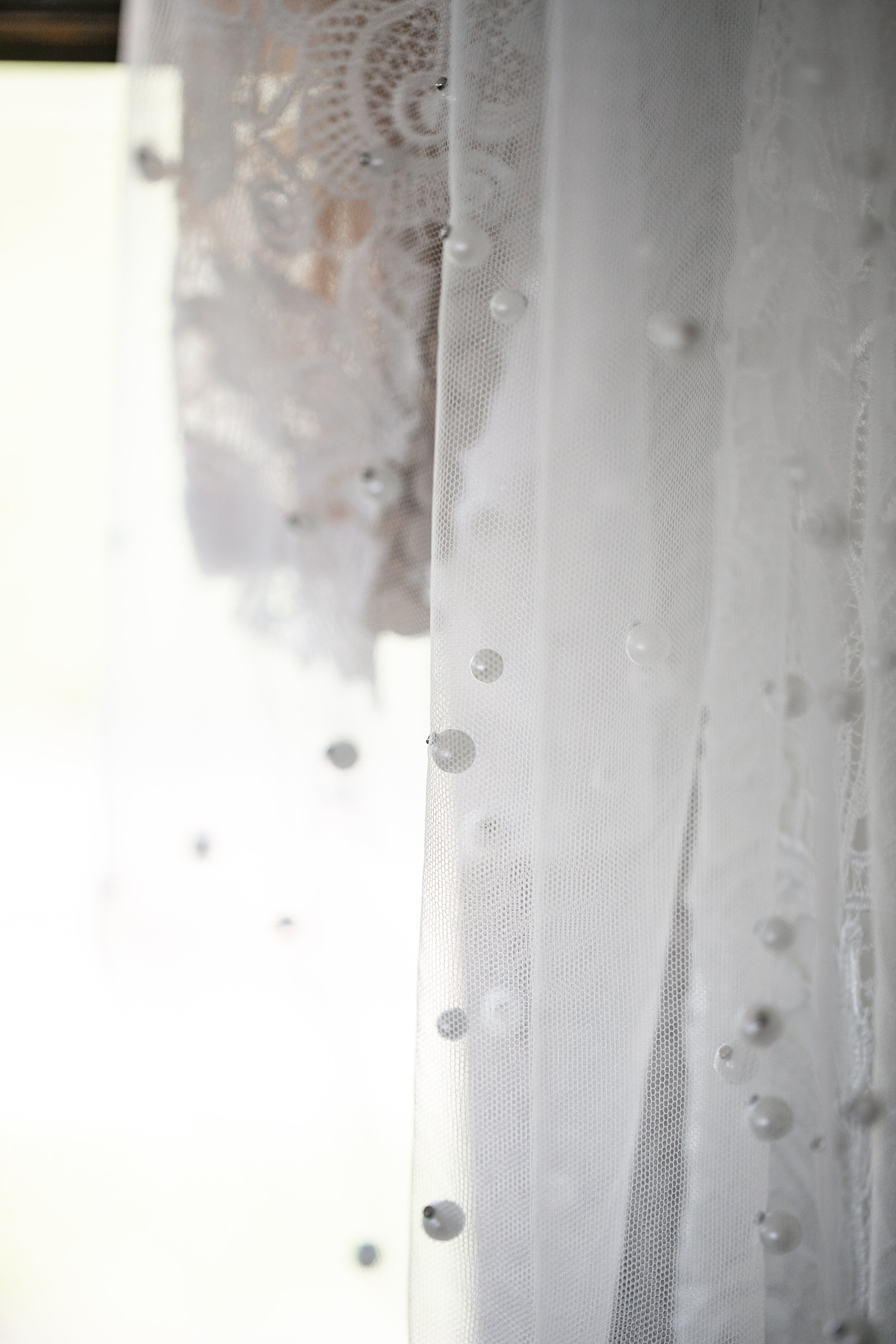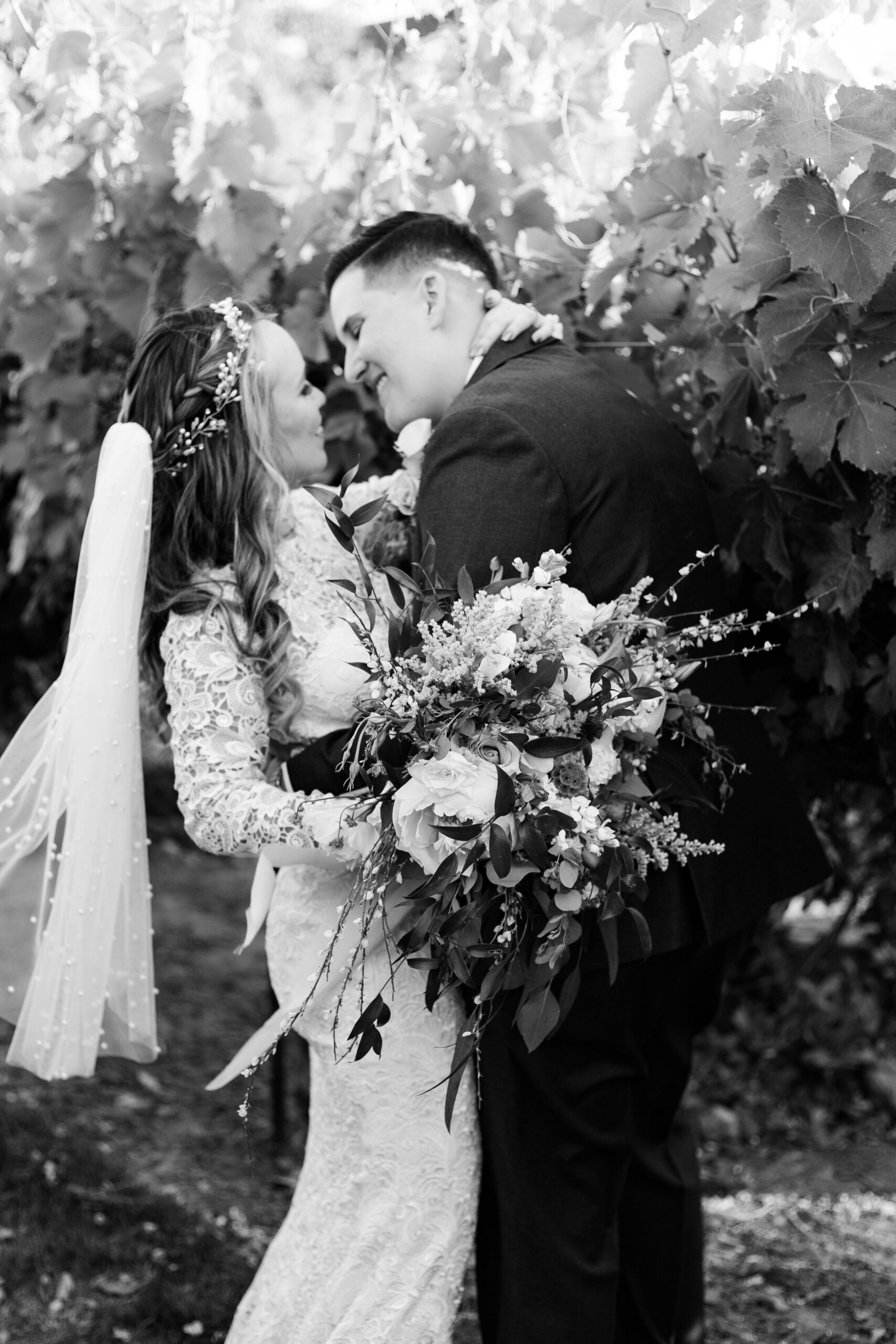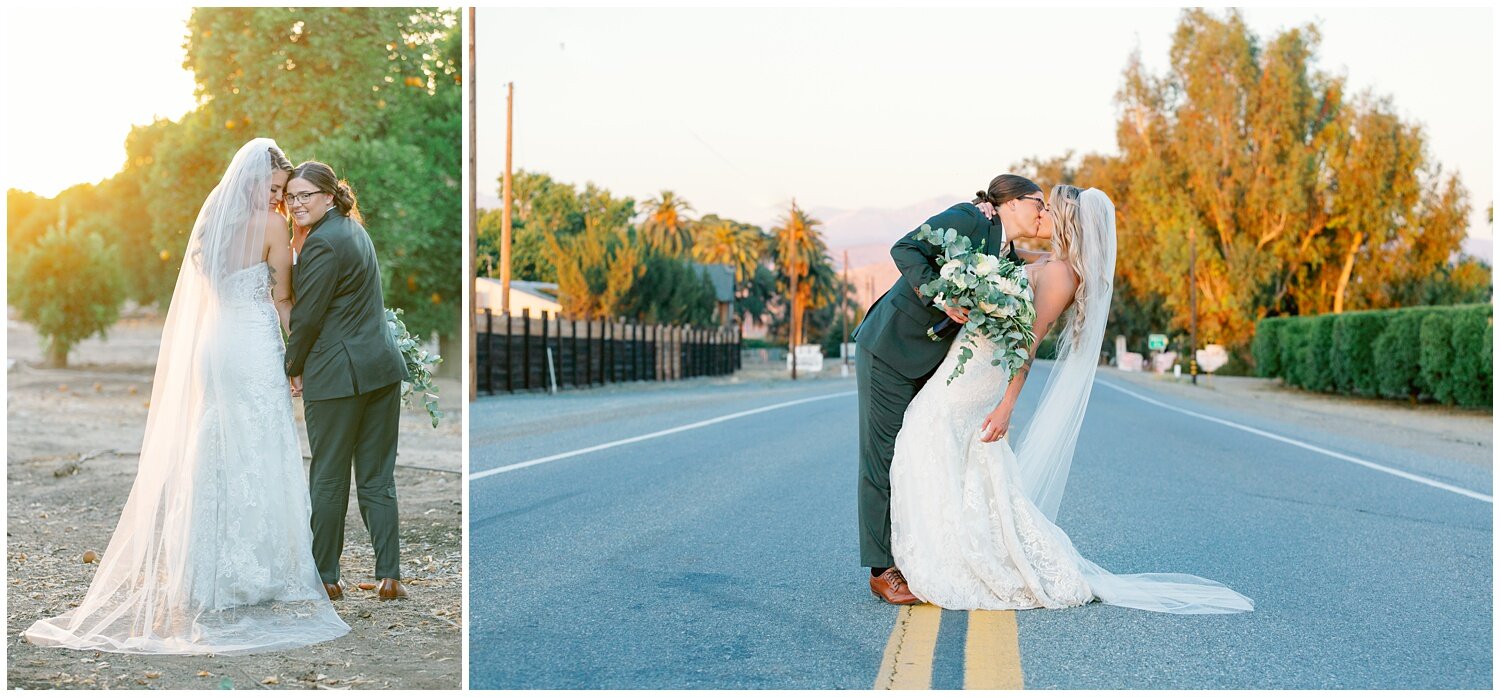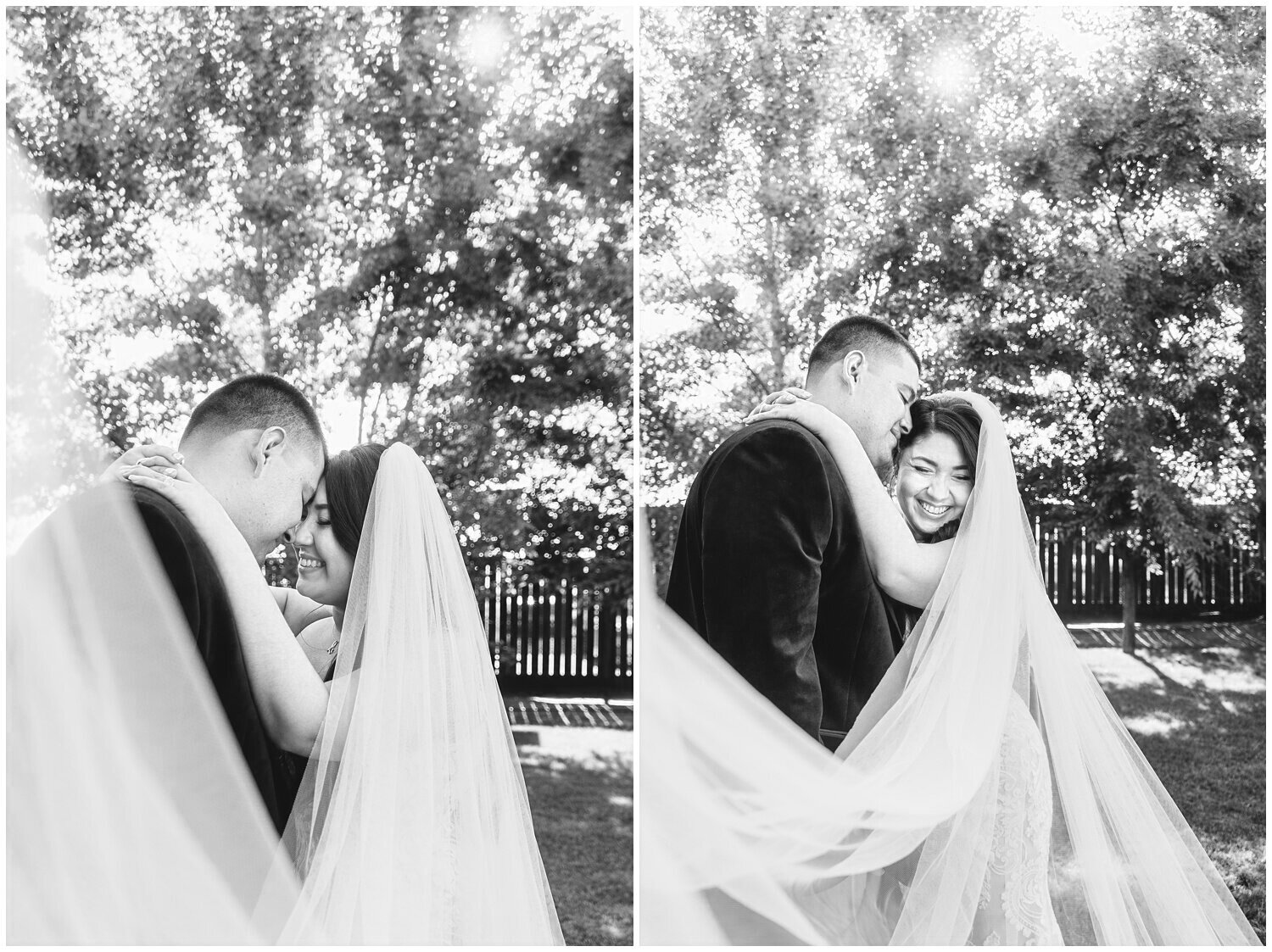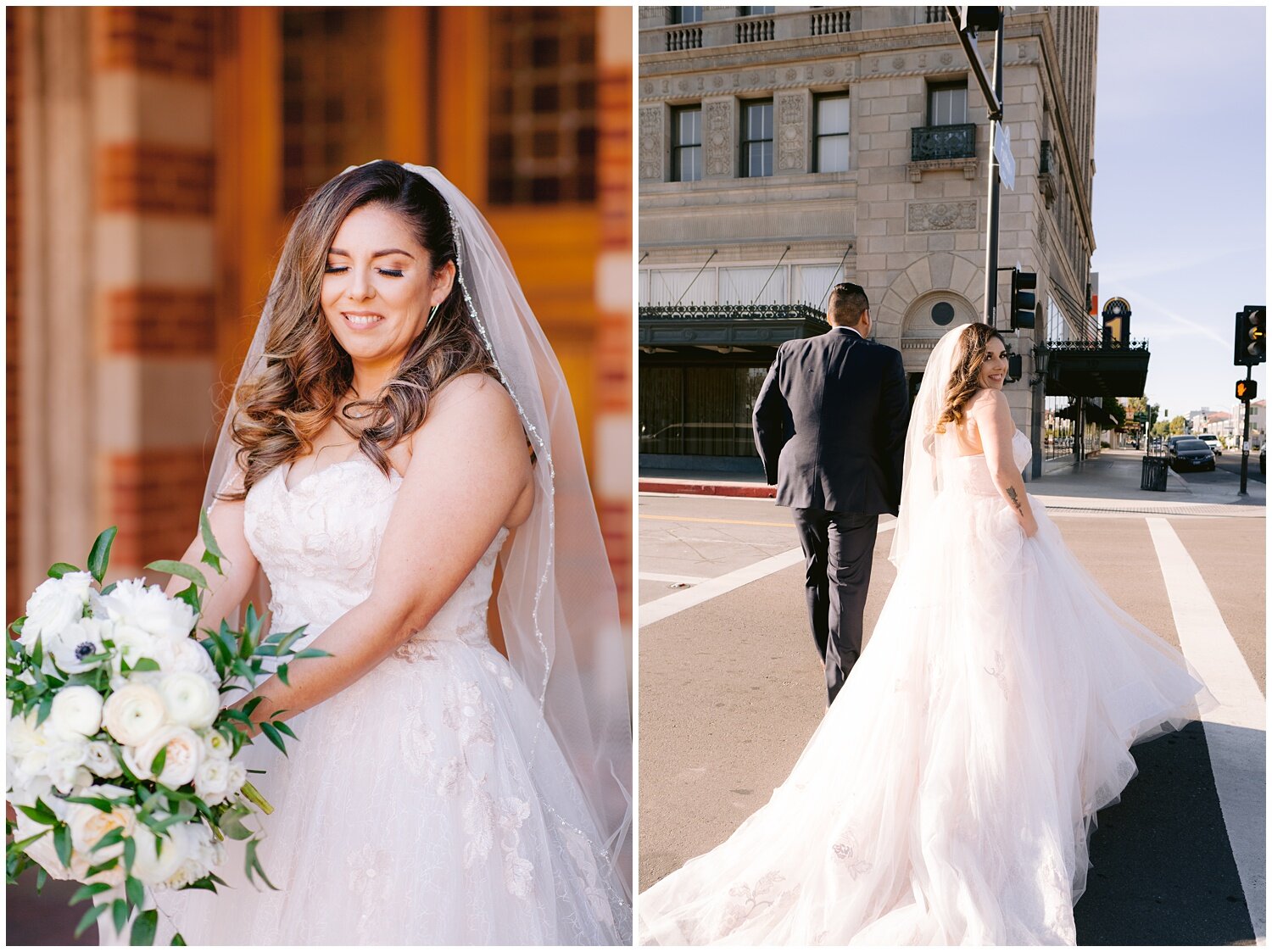Wedding veil styles can complete or contradict your look depending on your overall wedding day outfit. Between your hairstyle, details such as lace or beading and different colors, there are many factors to consider. I will be going through my favorite wedding veil styles and how some of your choices can effect your wedding portraits.
First things first – Do you want a wedding veil?
Personally, I think the answer is always yes. However, everyone is different and if you do not want a veil, then definitely DO NOT purchase one. As a reminder, your wedding day is about you two and everyone else’s opinions can take a backseat. Some complaints from my clients who have worn veils are mostly about friends/ family/ partners accidentally pulling on their veil throughout the day. This can be annoying and painful. Most veils are worn for the ceremony, some portraits and then taken off during the reception. Of course, depending on the length of your veil, this can vary but we will discuss length in just a moment. Another complaint about veils that I have experienced is it getting caught on different fabrics. This is more of a concern for cathedral veils that have a long train. At one wedding the bride was walking down carpeted staircase and her beaded veil was getting caught in the carpet fibers, she felt it pulling as she started walking and had to yank it from the carpet to continue her walk down the aisle. Despite some of these concerns, I think that veils can be a great option for you if done with intention.
After deciding you want a veil for your wedding outfit, I would decide on what legnth you are wanting. There are a variety of lengths to chose from – see below.
Wedding Veil Styles by Length – by Brides.com
Bird Cage Wedding Veil: 4-9″
This short and flirty wedding veil can cover just the eyes, skim the nose or fall at the jawline. Usually made of a net or lace, this style is also known as a bandeau veil.
Shoulder-Length Wedding Veil: 20-22″
As the name suggests, this wedding veil style hits your shoulders. Shoulder-length wedding veils are a great option for someone who want a traditional-looking veil that doesn’t compete with the details of their dress.
Blusher Wedding Veil: 30″
Also known as an angle veil or wedge veil, this style offers a less traditional look with vintage appeal. A blusher is a short veil that falls over the face and ends near the top of the dress
Elbow Wedding Veil: 32″
If you want a more conservative look for your ceremony, an elbow-length veil is an elegant way to cover up without wearing a bulky bolero or shrug.
Fingertip Wedding Veil: 38-40″
A fingertip veil falls beyond your hips and is a popular choice because it allows any design on the back of a gown to be seen through the sheer fabric.
Knee-Length Veil: 48″
Designed to fall to your knee, this wedding veil length offers drama and elegance without weighing you down. The veil can be adjusted to fall a little longer or a little shorter to fall just at your knee, depending on your height.
Waltz/ Ballet Wedding Veil: 60″
There’s no rule that says you need to take off your veil for the reception. But if you do choose to keep it on, make sure it won’t get in the way of dancing and mingling.
Floor-Length Wedding Veil: 72″
The flowing fabric will add extra volume to your look, perfect for a someone who was torn between a ball gown and a more streamlined silhouette.
Chapel Wedding Veil: 90″
Opting to forgo a train? A chapel-length veil will create the illusion of a train, without any pesky bustling required.
Cathedral Wedding Veil: 108-120″
For the most regal entrance, you must have a cathedral-length veil.
Alongside deciding on your length, you will want to take into consideration a few things for your wedding veil styles.
-
Your budget
-
Surprisingly wedding veils can be more expensive than some couples realize. In a bridal/wedding shop, veils usually start around $200 and can go up into the thousands. Many of my couples have purchased their veil with a local vendor or on etsy and we’re able to find the perfect veil within their budget. If you are in sticker shock over the price of your veil – don’t give up! I would recommend searching other sites/ locally to find something more in your budget.
-
-
Your hairstyle
-
Keep in mind what your hairstyle is going look like. Are you wanting an updo because you want to show off your low back dress or because you get hot easily. I would recommend on getting a lighter veil with not a lot of detail that will overshadow your dress. Some hairstyles require a low placement on your head whereas other styles maybe better on the crown of your head. Definitely discuss with your hairstylist about what type of veil you are thinking of. I highly recommend actually bringing your veil to your trial so you can get a complete trial look and feeling for the day.
-
-
Your wedding outfit.
-
Depending on the type of outfit you are wearing, you want to adjust the length accordingly. Some outfits are most complimented with a cathedral or chapel veil where others might look better with a birdcage. As you try on your outfit, ask your consultant to bring out a variety of veils for your to try on to see what looks and feels best for yourself.
-
-
Details, details, details
-
In my experience, less is more as far as details for your wedding veil styles. Some brides opt to have beautiful beading, pearls or crystals sewn into your veil. This is absolutely stunning, but this will add weight to your veil, which won’t be as comfortable for you on the day of and can be limiting on your portraits (explained below). Lace details are a good alternative to beading as they are a little lighter, but this can be too busy depending on your wedding outfit. My favorite accent to your wedding veil styles are sparkle tulle and/ or colored veils. Sparkle tulle can be the perfect pop to your veil with it still being lightweight and complimentary to your wedding outfit. If you are wanting a pop to your outfit, try a different colored veil.
-
Lastly, how do you make your veil fly?
Not all veils are created equally and some have limited flying power. If you are looking for that classic veil photo, you will want to read this list carefully.
-
Avoid heavy beading or details that will weigh your veil down (bare tulle is what flys best!)
-
One layer of tulle is better than multiple layers of tulle.
-
Avoid pure white, you want ivory tones. Some veils can photograph blue if they are “true white”. It is best to go with an ivory or cream tone, if you’re feeling frisky try a pink or blush tone.
